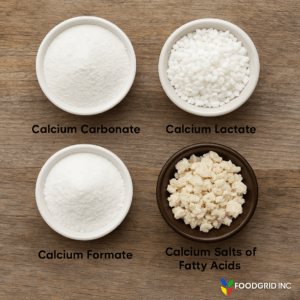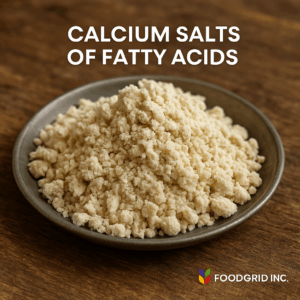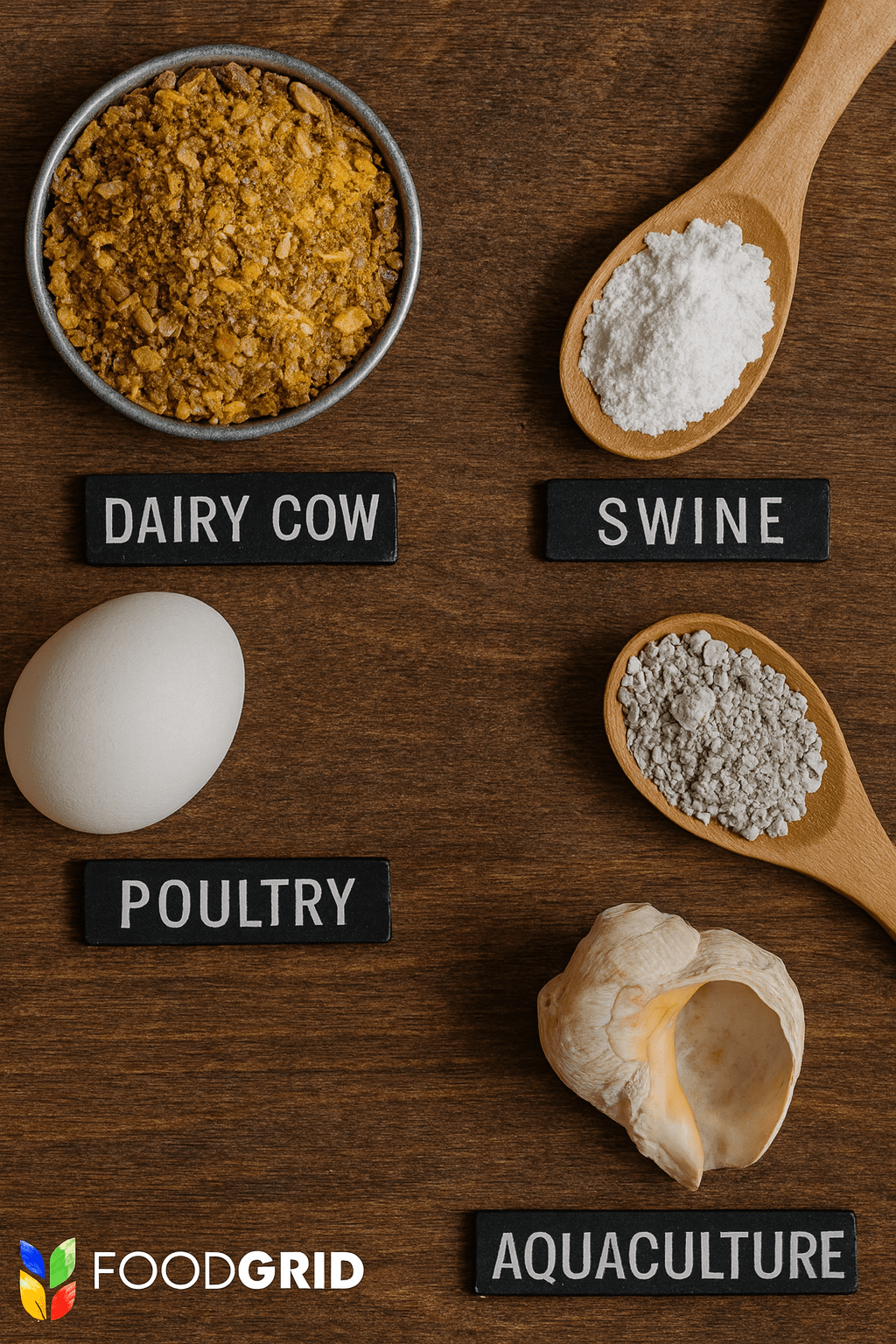Behind every liter of milk, tray of eggs, or kilogram of pork lies a science-driven feed formulation. Among its key components, calcium salts stand out—not just for bone development, but as catalysts of energy metabolism, gut health, and overall performance. While their use has long been standard, the way calcium salts are applied, formulated, and marketed is rapidly evolving.
Why Calcium Is a Cornerstone in Animal Nutrition
Calcium represents one of the most abundant minerals in animal tissues. Its functions extend far beyond structural support:
- Skeletal Framework: 99% of calcium resides in bones and teeth.
- Neuromuscular Function: Calcium ions regulate muscle contraction and nerve transmission.
- Blood Clotting and Immunity: Essential for normal clotting mechanisms and immune cell activity.
- Milk and Egg Formation: Core component of milk secretion and eggshell mineralization.
Without balanced calcium intake, livestock risk hypocalcemia, poor growth, and reduced productivity.
Different Forms of Calcium Salts: Their Roles in Practice
- Calcium Carbonate
- Inexpensive, widely available.
- Major source for poultry layers (eggshell strength).
- Buffers rumen pH in cattle, reducing acidosis risk.
- Calcium Lactate
- Organic and highly digestible.
- Effective in starter diets for chicks and piglets.
- Enhances absorption even under intestinal stress.
- Calcium Formate
- Combines calcium supplementation with gut acidification.
- Inhibits pathogenic bacteria in swine and poultry.
- Improves growth performance when antibiotics are restricted.
- Calcium Salts of Fatty Acids (Bypass Fats)
- Provide concentrated energy for high-yielding ruminants.
- Increase milk yield and fat percentage in dairy cows.
- Bypass rumen degradation, directly absorbed in the intestine.

Physiological Benefits Across Species
Dairy Cattle
- Prevents milk fever at calving.
- Improves milk fat content with bypass fats.
- Supports skeletal strength under intensive production.
Poultry
- Crucial for eggshell thickness and strength.
- Reduces breakage losses and improves hatchability.
- Supports skeletal development in broilers, preventing leg weakness.
Swine
- Calcium formate enhances gut health and feed conversion efficiency.
- Supports skeletal strength in sows and piglets.
- Reduces risk of diarrhea by lowering intestinal pH.
Aquaculture
- Shellfish and shrimp require calcium for exoskeleton formation.
- Supports bone ossification in fish.
- Improves growth rates in high-density farming systems.
Feeding Strategies for Calcium Salts
Balancing Calcium and Phosphorus
- Correct Ca:P ratio (generally 2:1) is essential.
- Imbalance can cause rickets, poor egg production, or reduced weight gain.
Targeted Supplementation
- Dairy transition diets: Use rumen-protected calcium sources.
- Layer diets: High-quality calcium carbonate at varying particle sizes ensures steady release.
- Swine starter feeds: Incorporating calcium formate improves early growth.
Species-Specific Formulations
- Cattle: Combination of carbonate and bypass fats.
- Poultry: Mix of fine and coarse calcium carbonate.
- Swine: Formate with organic acids.
- Aquaculture: Water-stable calcium supplements to prevent nutrient leaching.

Industry and Market Trends
- Shift Toward Functional Additives: Calcium formate and calcium salts of fatty acids gain traction for dual benefits (nutrition + gut/energy functions).
- Sustainability in Production : Focus on mineral bioavailability to reduce environmental waste.
- Antibiotic-Free Production : Calcium formate positioned as an alternative for gut health management.
- Aquaculture Growth: Rising demand in Asia-Pacific is driving innovation in water-stable calcium salt formulations.
- Digital Nutrition Models: Feed formulation software increasingly incorporates precise mineral balancing, optimizing calcium salt use.
Practical Challenges in Calcium Salt Utilization
- Over-supplementation risks: Can interfere with phosphorus and zinc absorption.
- Variability in raw materials: Quality of limestone or carbonate sources differs by geography.
- Feed cost pressures: Farmers often balance cost vs. digestibility when choosing calcium sources.
Internal Resources for Further Learning
- FoodGrid: Animal Feed Solutions → https://foodgridinc.com/
- FoodGrid Blog on Feed Innovations → https://foodgridinc.com/foodblog/
References
- NIH Office of Dietary Supplements: https://ods.od.nih.gov/factsheets/Calcium-Consumer/
- ScienceDirect (Calcium salts research): https://www.sciencedirect.com/
- USDA Livestock Economics: https://www.ers.usda.gov/
Conclusion: Calcium Salts as a Competitive Edge
The integration of calcium salts into animal feeds is not just a nutritional necessity—it is a strategic advantage in modern livestock and aquaculture production. Whether through stronger eggshells, healthier piglets, or higher milk yield, calcium salts underpin both productivity and profitability.
With rising demand for meat, milk, and fish, and growing scrutiny on animal welfare, choosing the right form and formulation of calcium salts will separate high-performing producers from the rest.
👉 Explore scientifically backed calcium solutions at FoodGrid today: https://foodgridinc.com/
